Iran plane downing: How media responded to public anger
- Published

"More bitter than bitter" and "Unforgiveable" were among Iranian newspaper headlines
Outrage in Iran over the shooting down of a Ukrainian airliner, and the delay in admitting responsibility for it, has been prominent in its media.
Sentiments normally seen in social media posts have made their way into more mainstream outlets that normally toe the line.
There has been an acknowledgement that people have a right to be angry.
'Death to the dictator'
Immediately after the crash on 8 January, state media and the press vehemently denied the military's involvement in the incident, blaming it on "technical issues".
After the Islamic Revolutionary Guards Corps (IRGC) admitted three days later that they had shot down the plane, protests broke out in Tehran and other cities.
In response, outlets that would normally cast such events as "seditious" behaviour, and claim that they are being incited or exploited by foreign powers, took a different tone.
The normally partisan Fars news agency, which is linked to the IRGC, published unusually frank and detailed reports of the protests. It reported slogans criticising the IRGC and officials and even quoted the "death to the dictator" slogan, a reference to Supreme Leader Ayatollah Ali Khamenei.
A video accompanying one report showed protesters tearing down a poster of Qasem Soleimani, the IRGC commander killed in a US air strike in Baghdad at the start of the year.

Video of protesters tearing down posters was shared by the usually pro-government Fars news agency
Iran conducted missile strikes on US forces to avenge Soleimani's death, and it was amid the heightened tensions shortly after the strikes that the plane was hit.
Fars also quoted the protesters calling themselves "fighters".
This is unusual. When protests took place in November over fuel prices, Fars's descriptions of protesters were based on what figures of authority called them. "Thugs and rioters" and "anarchist movements" were examples.

Even this image of defiance published by the Iranian Student News Agency is a change in tone
A number of news agencies and newspapers have also apologised to their users and blamed officials for misinforming them.
"We at the Islamic Republic of Iran News Agency apologise if, during the past three days, we unintentionally conveyed untrue content to our audience," the official state agency said.
'A funeral for public trust'
Similar messages were carried on the front pages of major newspapers.
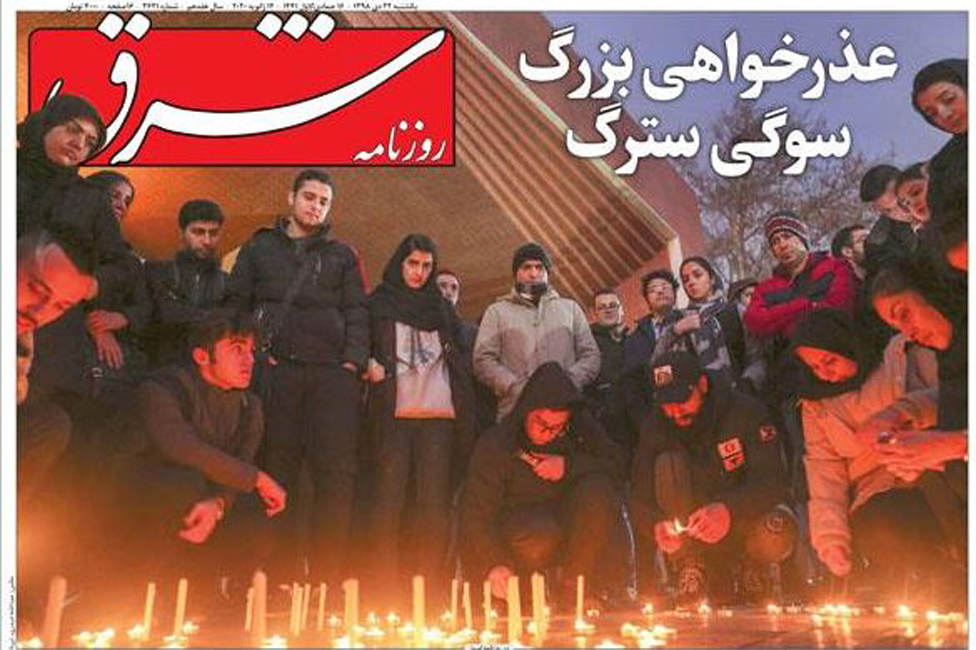
Sharq newspaper apologised to its readers in an editorial
Several journalists also complained that their reputations had been damaged.
"Almost all our media outlets feel their credibility has unfortunately been ruined," said one presenter on Iran's rolling news channel. He warned people would be pushed towards foreign media to get their news, especially in a crisis.
Tehran's Association of Journalists put it in stronger terms.
"We are holding a funeral for public trust. The first coffins include the corpses of the official media, especially [of the state broadcaster] Voice and Vision, and then other newspapers and websites."
A handful of journalists from Iran's state broadcaster resigned in the wake of the IRGC taking responsibility for the plane downing.
"It was very hard for me to believe that our people have been killed. Forgive me that I got to know this late. And forgive me for the 13 years I told you lies," said presenter Gelare Habbasi on her Instagram account.

"I cannot continue my career in the radio and TV after 21 years. I cannot, not any more," said morning show host Saba Rad
Channel One's Zahra Khatami-Rad vowed: "I will never return to television."
Many Iranian celebrities have also used their Instagram accounts to criticise the authorities for their slowness in taking responsibility for the crash, with musicians cancelling concerts and those in the film industry pulling out of the forthcoming International Fajr Film Festival.
Popular actor Hamed Behdad said the protests were a "turning point" and called on officials to "put an end to fabricating lies".
"We are not citizens, have never been. We are prisoners, millions of prisoners," wrote another actor, Taraneh Alidoosti.

The unusual tone in many Iranian outlets this week is unlikely to translate into a fundamental overhaul of the country's media practices, however.

Prominent filmmaker Rakhshan Banietemad retracted an invitation for people to gather after she was briefly arrested and given "serious warnings"
Despite the resignations of some of its journalists, the state broadcaster, whose chief is chosen by Ayatollah Khamenei, has so far shown no major change in its news reporting.
An 'unintentional mistake'
While state TV channels expressed sympathy with the families of the crash victims, they also said several "seditionists" and foreign-based Persian-language TV channels were trying to "hijack" people's demands and emotions.
After the videos of attacks on Soleimani posters emerged, state radio reminded its audiences of the IRGC's role in "safeguarding" the country's security and borders, and stressed that an "unintentional mistake" should not lead to an attack on the Guards.
This week, Iran said it had arrested a person who filmed footage of the plane being shot down by a missile. Video of the plane being hit was used by a number of open source investigation teams to verify why the plane crashed.
BBC Monitoring, external reports and analyses news from TV, radio, web and print media around the world. You can follow BBC Monitoring on Twitter, external and Facebook, external.
- Published13 January 2020
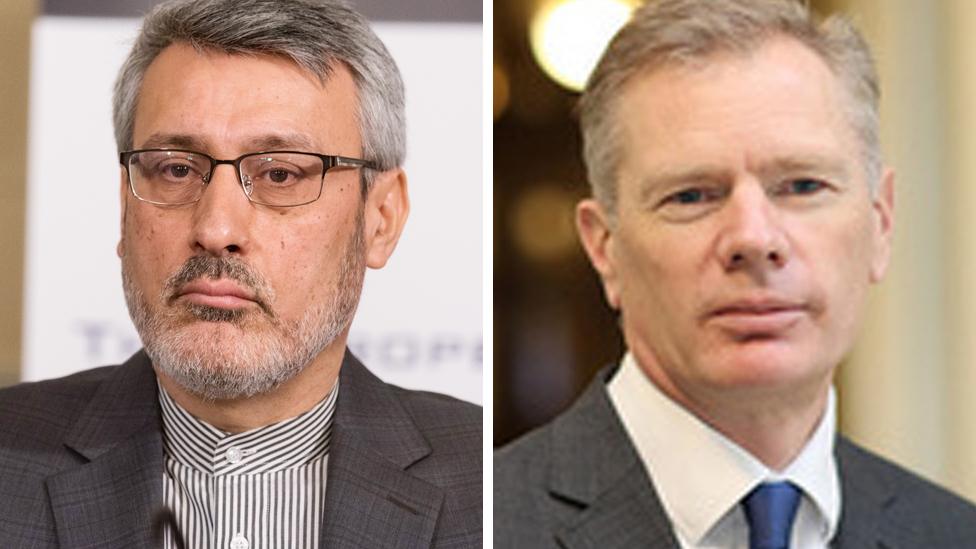
- Published13 January 2020
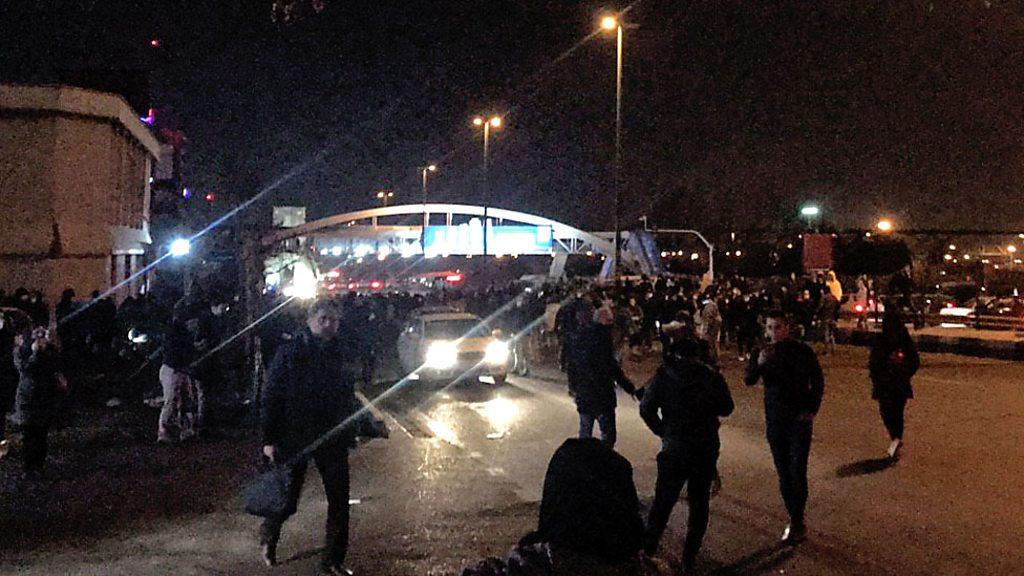
- Published12 January 2020

- Published14 January 2020
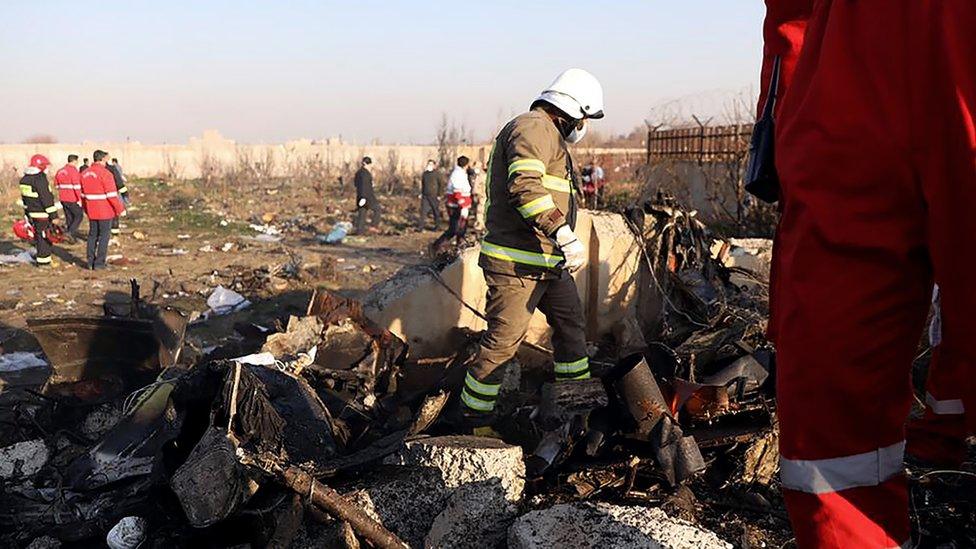
- Published11 January 2020
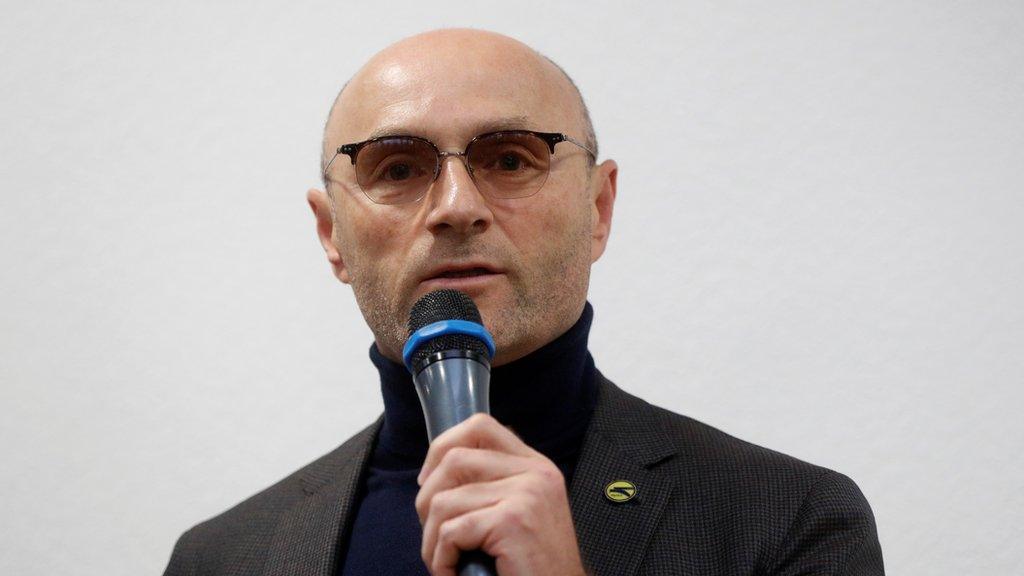
- Published9 January 2020
